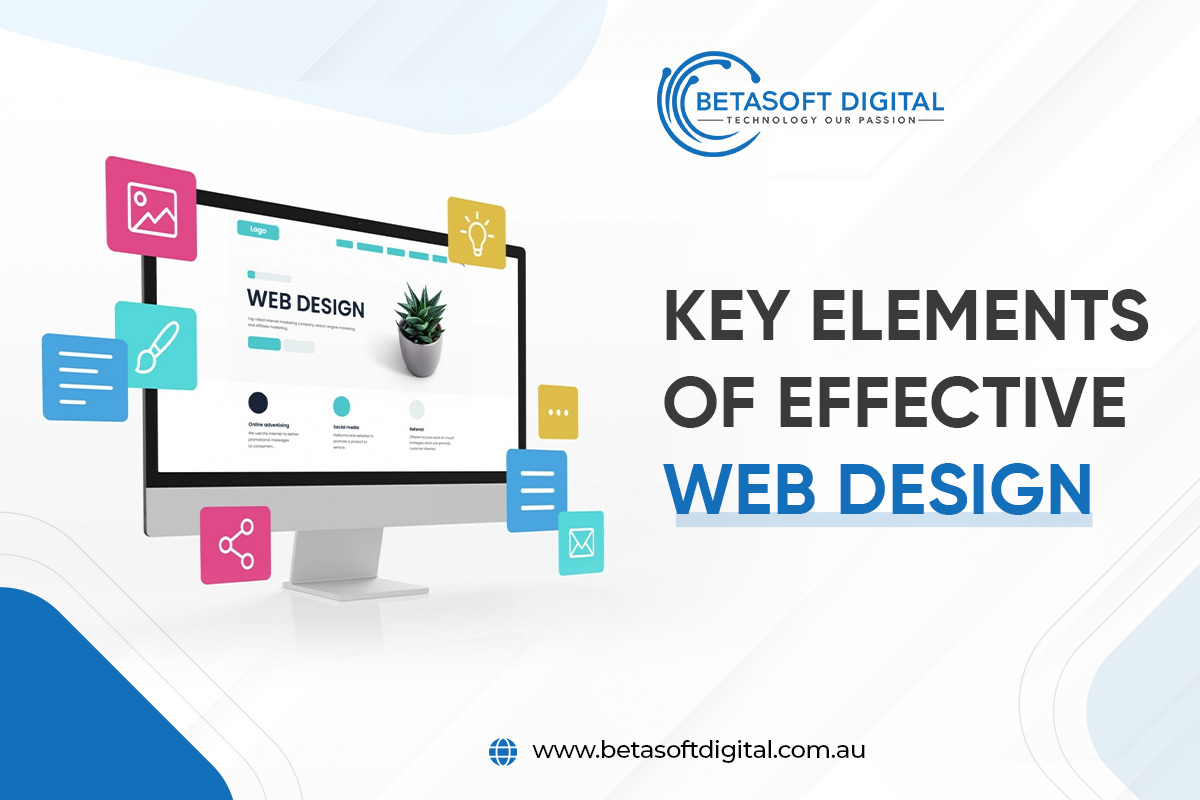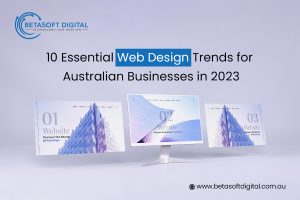A website is one of the most important tools a business owner has in order to attract and retain clients and customers. A great website should have the key elements for effective Web Design. Effective web design incorporates search engine optimization (SEO) techniques, fast loading speed, and well-written and relevant content. It also includes consistent branding elements, such as logos, color schemes, and typography, to maintain a professional website design.
By incorporating these key elements, websites can attract and engage visitors, improve search engine rankings, and achieve their intended goals. When it comes to designing a website, incorporating business goals, marketing objectives, and branding can be complex.
Top 7 Most Important Elements of A Website Design:
Navigation:
A well-curated navigation bar is important for effective web design as it allows users to find the information they need quickly and easily. It should have straightforward titles and easy navigation to facilitate easy access to information, improve user experience, increase website engagement, and enhance SEO. A clear and concise navigation bar can encourage visitors to explore the website further, leading to increased engagement and time spent on the site.
Mobile Responsiveness:
In today’s mobile-orientated society, more business takes place on mobile than on traditional computers and laptops. A responsive website keeps your audience engaged longer and the longer they’re on your website, the greater opportunity that they’ll do business with you. The importance of a mobile responsive website can’t be stressed enough as 57% of internet users say they wouldn’t even recommend a business with a poorly designed mobile website. With mobile devices accounting for nearly 2 of every 3 minutes spent browsing online, it should be of high priority that your website is responsive over all devices.
Content Presentation:
Presenting content in a user-friendly manner is essential for effective web design. Breaking up content into digestible sections using headers is an effective way to organize information and improve navigation. This technique involves short paragraphs, concise language, and user-friendly typography, highlighting key elements, and strategically placing headers. A well-organized and intuitive format enhances the user experience and maintains visitor interest in the website.
Website Structure:
The website structure has a significant impact on user experience and search engine optimization (SEO). A well-structured website optimizes the user experience by streamlining the process of finding vital information and navigating the platform. This enhancement benefits SEO by improving the site’s accessibility for search engine crawlers. In addition to choosing the right website structure, it is important to structure the content on each page effectively. This includes using headers to break up the content into manageable sections and using short paragraphs, sentences, and easy-to-read typography.
Visual Design:
A clean design allows the content to take center stage and avoids overwhelming the reader with unnecessary elements. A simple design enhances readability by using legible fonts, appropriate font sizes, and ample white space. The simplified content allows readers to more easily engage with it. Limiting the number of colors and fonts used in the design helps maintain a cohesive and consistent visual identity. It creates a sense of harmony and professionalism throughout the blog.
Essential Elements:
Every homepage should have essential elements that help visitors understand the website’s purpose and guide them through the site. A clear and concise headline that communicates the website’s purpose and value proposition is essential. It should be easy to read and located prominently on the homepage. Primary calls-to-action (CTAs) guide visitors through the website and encourage them to take specific actions, such as signing up for a newsletter or making a purchase.
Usability and User Experience:
Interaction and satisfaction are the dual aspects of a website’s usability, with user experience design aiming to create a positive experience for users. By skillfully incorporating design elements, designers can create a visual hierarchy that facilitates user engagement and comprehension. Best practices for visual hierarchy include using a consistent layout, limiting the number of contrast variations, and using different treatments for headers, subheaders, and body text.
The Bottom Line
Effective web design also requires thoughtful organization and planning to ensure that the website is easy to navigate and understand. A well-designed website can help build trust, guide visitors to take action and create a positive impression. By utilizing IT services Adelaide, businesses can ensure that their IT infrastructure is secure and efficient. With a range of IT service providers in Adelaide available, businesses can choose the provider that best meets their needs. Betasoft Digital is one of the company that helps in achieving key elements of effective web design by providing professional web development and design services.


